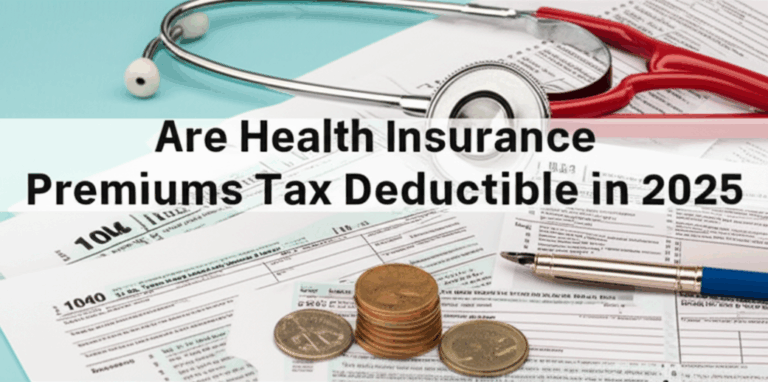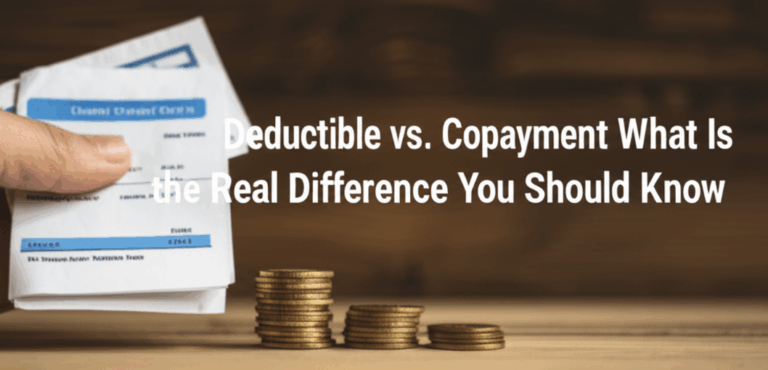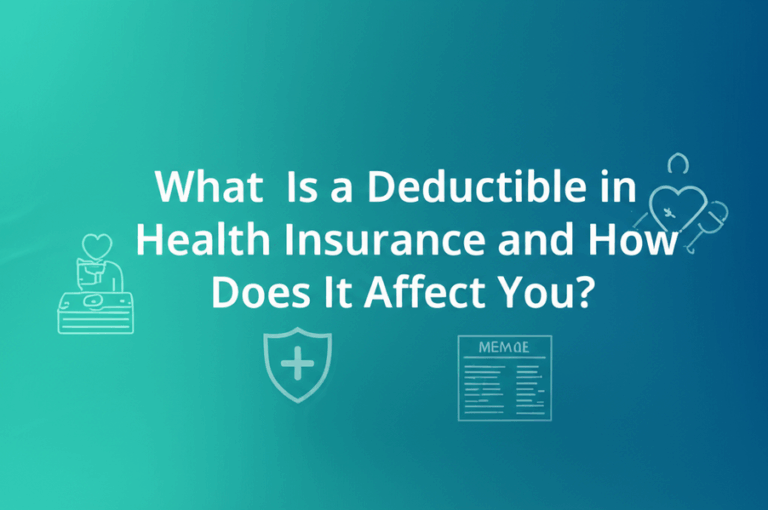How to Choose Health Insurance Easily Step by Step in 2025

Health insurance can help protect our health and our budget. When we learn how to choose health insurance, we can feel more confident about picking a plan in 2025.
We will find out how to make the best decision by understanding the steps, the differences in health plan types, and costs. Our choices can change lives, so keep reading to get clear, useful guidance you can trust.
What steps help you start choosing health insurance?
Choosing the right health insurance plan starts with a few small steps. Our first job is to build a solid base of knowledge. When we know the words insurers use, like deductible, copay, coverage, and network, we catch on much faster. Understanding the key health insurance terms gives us confidence to ask the right questions and look at plans without feeling lost. We find these words in every plan and every piece of paperwork, so we need to get comfortable with their meaning.
Next, we check if we qualify for special plans or help. Some people get help from Medicaid, Medicare, CHIP, or subsidies on the Health Insurance Marketplace. Others get coverage through jobs or families. If we have a lower income, we might get extra help paying monthly costs. Every state and program has different rules, so we should look up ours and compare them with what we find at HealthCare.gov.
Now we begin reviewing all the coverage options we can get. Our choices depend on where we live and our situation. The options might include employer-sponsored coverage, Marketplace plans, or government programs. We can check with our HR team, talk to healthcare navigators, or visit official state and federal websites. Having all our possible plans in front of us gives us the best chance to compare.
- We write down our main concerns: doctor choice, hospital access, monthly costs, and other needs.
- We make a checklist so we do not skip anything when looking at each health insurance plan.
[Photo of a family looking at papers and a laptop, reviewing insurance plan documents together]
What things should you check before picking a plan?
When we narrow our options, we need to check if our doctors and hospitals are in the plan’s network. Insurance companies save money by contracting with select healthcare providers. If we have favorite doctors, we should ask if they accept the plan. Hospital location also matters during emergencies.
We need to think about our health over the last year. Did we have any regular checkups, hospital visits, or ongoing medicine? This helps us see if a plan gives enough coverage for our likely needs. Then, we can guess what we might need for the next year. For example, if a family member expects surgery or a baby, we want a plan that covers more services at lower out-of-pocket costs.
Reviewing health insurance costs is our next step. We compare premiums, which are our monthly bills, but we must also look at deductibles, copays, and coinsurance. A plan with a lower premium might cost more when we use health care, while a higher premium plan might save us overall if we need frequent care. We check each plan document to see how all these costs get split.
| Plan | Monthly Cost | Deductible | Doctors in Network |
|---|---|---|---|
| Plan A (HMO) | $180 | $2,000 | Local only |
| Plan B (PPO) | $220 | $1,000 | National |
[Photo of insurance plan documents spread out on a kitchen table, hands using a calculator]
What are the different types of health insurance plans in the US?
We often hear about HMO, PPO, EPO, and POS health insurance plans. Each type shapes how we get care and what we pay. An HMO (Health Maintenance Organization) asks us to pick a main doctor, and we need referrals for specialists. An HMO usually costs less, but care is limited to local providers. A PPO (Preferred Provider Organization) gives us more choices and does not need referrals, but it usually costs more.
An EPO (Exclusive Provider Organization) is similar to a PPO, only we must use the plan’s network for coverage, except in emergencies. A POS (Point of Service) combines HMO and PPO features. With POS, we pick a main doctor, but we can go out of network if needed with a referral. Each type works best for different needs. HMOs work for those who see a few local doctors. PPO works if we need more flexible coverage or travel. POS gives us options with some structure. EPO offers good value with a strong local network.
We learn exactly what each plan type covers by reading their summaries. We check if we must call our main doctor for a referral before seeing a specialist. Usually, PPO plans give us more freedom but cost more. HMO and EPO have lower premiums but limit care to the network. POS lets us use out-of-network providers but requires a referral. We compare details, look for emergency rules, and check online reviews or feedback from real members.
[Photo of a smiling health insurance agent with brochures at an information desk]
What costs do you need to look at before deciding?
Understanding health insurance costs helps us control our spending and avoid surprises. A premium is what we pay each month. A deductible is what we pay out of our own pocket before insurance shares the cost. A copay is the fixed amount we pay when we visit the doctor or fill a prescription. Coinsurance is the percent of the bill we pay after reaching our deductible. Every plan has an out-of-pocket maximum, the most we must spend each year before insurance covers all remaining costs.
Let us take an example: If our plan has a $1,500 deductible and we pay a $30 copay at each visit, that means we pay 100% of bills up to $1,500 first. After that, insurance starts to pay, but we may also pay 20% coinsurance. If our plan’s max is $7,000, insurance picks up everything above that.
| Term | What We Pay |
|---|---|
| Premium | Every month (even if we do not use care) |
| Deductible | First bills before insurance shares |
| Copay | Set price for each visit or prescription |
| Coinsurance | % of cost after deductible is reached |
| Out-of-Pocket Max | Limit to what we must pay in a year |
Experts at the Kaiser Family Foundation say the average single health plan deductible in 2024 rose to $1,736. We need to ask providers and use plan calculators to add up costs for several scenarios—one checkup or serious illness—before we decide.
[Photo of a person holding a health insurance ID card with a calculator and bills]
What extra benefits and plan perks can you get?
Many health insurance plans offer perks that improve our well-being. We may get dental and vision coverage—two areas often not included in basic health plans. Some plans cover eye exams and glasses. Others provide dental checkups and cleaning at little or no cost. It matters for families with kids or adults who wear glasses. Mental health coverage is now required in many plans. It helps pay for therapy to support our peace of mind.
Some health insurance plans want us to stay well, not just get treatment. They offer wellness programs, rewards for checkups, or online health tools. We can earn gift cards for annual visits or get gym discounts. Telehealth lets us talk to doctors virtually, a useful option if we have busy lives or live far from clinics. I have worked with clients whose insurance paid for fitness classes or gave discounts for healthy activity. My neighbor used virtual urgent care so her child could see a doctor from home. My experience shows these extras bring real value beyond core coverage.
[Photo of a happy woman doing a telehealth video call on her laptop at home]
What facts help you compare and choose the best plan for you?
We need to create a checklist or comparison table. We start with the things that matter most to our family—preferred doctors, medications, specialist access, and extra benefits. We write our deal-breakers. For example, must a plan cover our child’s inhaler? Is in-network hospital access important for us? Once we know our must-haves and nice-to-haves, we look at summaries from each insurance company.
A comparison table helps us see main differences side by side. It gives us a clear picture, which helps make a confident choice. Example:
| Priority | Plan A | Plan B |
|---|---|---|
| Doctors | In-network | Out-of-network included |
| Deductible | $2,000 | $1,000 |
| Vision | Included | Not included |
| Telehealth | Yes | No |
We use trustworthy online tools and reviews, such as Health insurance buying tips, to guide us. When we feel stuck, a licensed broker or local navigator helps us review all options. They can also answer our questions based on real-world claims experience.
What are the most common questions about picking health insurance?
Full yes/no question: Is open enrollment the only time to sign up for a new health insurance plan? Yes, for most plans in the US, but special enrollment may be available if we lose coverage or have a big life change. Special enrollment periods come when we get married, have a baby, or lose other health insurance.
Full yes/no question: Do we lose our chance if we miss the deadline? Yes, unless we qualify for Medicaid, CHIP, or have a special enrollment event. We can ask for help from local health insurance counselors, who know the latest dates and rules.
Full yes/no question: Can we check if our medicine is on a plan’s list? Yes. Each insurance plan has a list called a formulary. Our doctor or pharmacist can help check it, or we can search online.
Full yes/no question: Is a high-deductible plan smart for us? Yes, if we are healthy and rarely use care. These plans save us money on premiums but may bring big costs if we get sick.
Full yes/no question: Can we get financial help? Yes, if our income is under certain limits. We apply on the Health Insurance Marketplace to check for tax credits or subsidies. Every year, millions get help to lower costs.
Full yes/no question: Can we change health insurance during the year? Yes, if we have certain life events. A new job, move, or birth in the family opens a special enrollment period.
What are the main things to remember when picking health insurance?
Our top rules: Write down what matters most to us. Double-check doctors, hospitals, and medication. Balance premium against the deductible and other costs. Ask questions before signing up. Every year, health insurance plans change—so do our needs. Double-check each fall before open enrollment. Then, we pick a plan and use benefits all year long.
Our personal needs shape the perfect plan. Learning how to choose health insurance can change our lives and reduce worry for our families in 2025. If you want to know the tax effects, check our guide on health insurance and taxes. If you run a business, read more about group health plans for employers.






